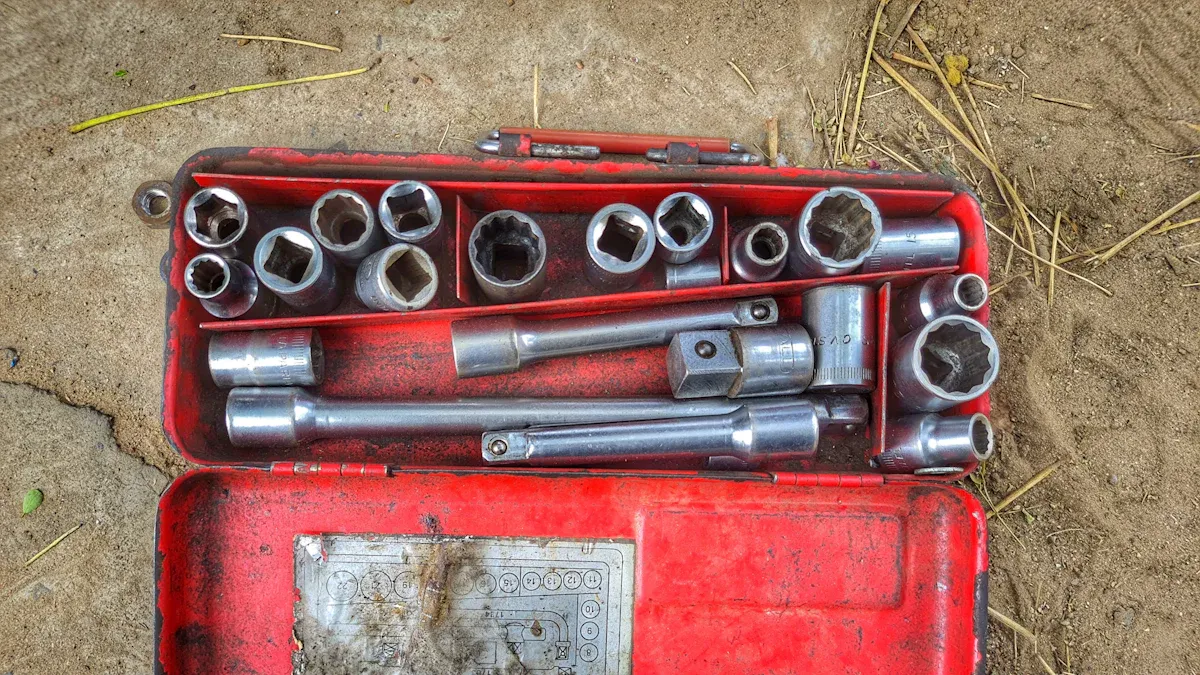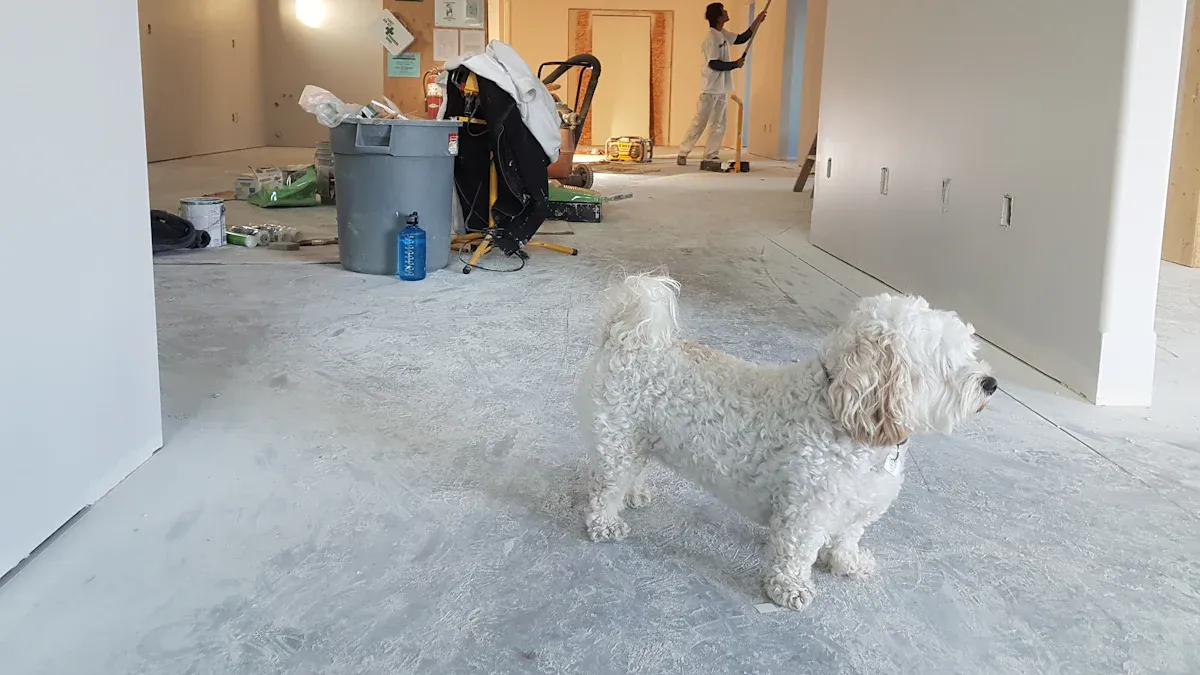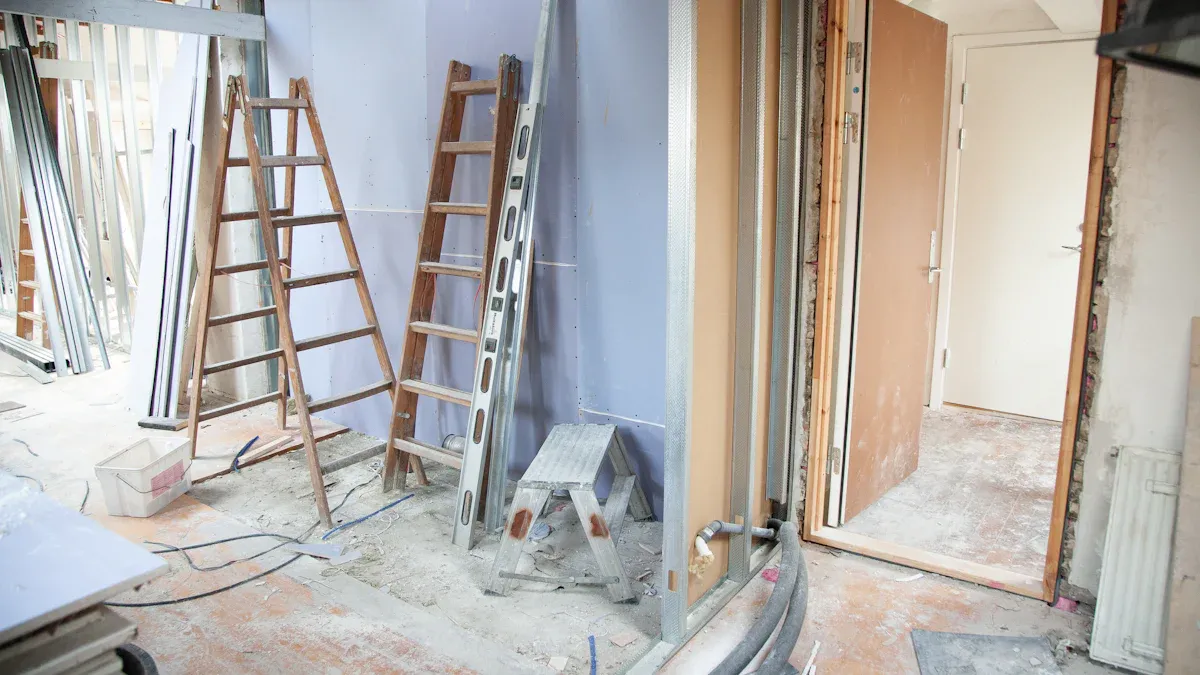
Property owners can achieve compliance with the 2025 EU Building Directive by choosingQuick and Easy Fittings. These include LED lighting, smart thermostats, insulation panels, and upgraded windows or doors. These updates lower energy bills, help meet legal standards, and may qualify for incentives. Early action prevents penalties.
Key Takeaways
- Upgrade to LED lighting and smart thermostats to save energy quickly and reduce bills.
- Improve insulation, draft-proofing, andreplace old windows or doorsto meet 2025 EU energy standards.
- Use available grants and incentives to lower renovation costs and increase property value.
Quick and Easy Fittings for Fast Compliance

LED Lighting Upgrades
LED lighting upgrades offer one of the simplest ways to boost energy efficiency. Many property owners choose this option first because it delivers immediate results. LED bulbs use advanced technology to produce bright light with very little electricity.
- Lighting makes up about 15% of the average home’s electricity use.
- Switching to LED lighting can save a household around $225 each year on energy bills.
- LED bulbs use up to 90% less energy than traditional incandescent bulbs.
- LEDs last up to 25 times longer than incandescent bulbs.
These benefits make LED lighting a top choice amongQuick and Easy Fittings. Property owners can install LED bulbs in minutes, making this upgrade both fast and cost-effective.
Smart Thermostats and Controls
Smart thermostats and controls help manage heating and cooling systems more efficiently. These devices learn user habits and adjust temperatures automatically. Many models connect to smartphones, allowing remote control. By keeping indoor temperatures steady, smart thermostats reduce wasted energy. This upgrade fits well with other Quick and Easy Fittings, offering both comfort and savings. Most smart thermostats install quickly and start saving energy right away.
Tip:Choose a smart thermostat that works with your current heating and cooling system for the best results.
Insulation Panels and Draft-Proofing
Insulation panels and draft-proofing products help keep warm or cool air inside a building. These Quick and Easy Fittings block gaps around windows, doors, and walls. Adding insulation panels to attics, basements, or walls can lower heating and cooling costs. Draft-proofing strips and sealants stop air leaks, making rooms more comfortable. Many insulation products come in easy-to-install kits, so property owners can complete upgrades without special tools.
Window and Door Upgrades
Old windows and doors often let heat escape in winter and enter in summer. Upgrading to energy-efficient models helps solve this problem. Modern windows use double or triple glazing to trap air and improve insulation. New doors feature better seals and stronger materials. These Quick and Easy Fittings reduce drafts and noise, while also improving security. Many manufacturers design replacement windows and doors for quick installation, so property owners can upgrade with minimal disruption.
Other Simple Energy-Saving Solutions
Several other Quick and Easy Fittings can help meet the 2025 EU Building Directive. Water-saving showerheads and faucets reduce hot water use. Programmable power strips cut off electricity to devices that are not in use. Reflective radiator panels direct heat back into rooms. Each of these solutions offers a simple way to lower energy bills and improve comfort. By combining several small upgrades, property owners can achieve significant savings and fast compliance.
Understanding the 2025 EU Building Directive

Key Energy Efficiency Standards
The 2025 EU Building Directive sets clear rules for energy use in buildings. These standards focus on reducing energy waste and lowering carbon emissions. Buildings must use less energy for heating, cooling, and lighting. The directive encourages the use of renewable energy sources, such as solar panels or heat pumps. Property owners must also improve insulation and install efficient windows and doors.
Note:The directive requires all new and renovated buildings to meet minimum energy performance levels. These levels depend on the building type and location.
A quick summary of the main standards:
- Lower energy use for heating and cooling
- Better insulation and draft-proofing
- Use ofenergy-efficient lightingand appliances
- Support for renewable energy systems
Who Needs to Comply
The directive applies to many types of buildings. Homeowners, landlords, and business owners must follow the rules if they plan to build, sell, or renovate properties. Public buildings, such as schools and hospitals, also fall under these requirements. Some historic buildings may receive special exceptions, but most properties must comply.
A simple table shows who needs to act:
| Building Type | Must Comply? |
|---|---|
| Homes | ✅ |
| Offices | ✅ |
| Shops | ✅ |
| Public Buildings | ✅ |
| Historic Buildings | Sometimes |
Deadlines and Enforcement
The EU set strict deadlines for compliance. Most property owners must meet the new standards by 2025. Local authorities will check buildings and issue certificates. Owners who do not comply may face fines or limits on selling or renting their properties.
Tip:Start planning upgrades early to avoid last-minute stress and possible penalties.
Making Quick and Easy Fittings Affordable
Cost Estimates and Potential Savings
Energy-efficient renovations can offer strong financial returns. Many property owners see lower utility bills after installingQuick and Easy Fittings. A large study of over 400,000 homes found that a 100 kWh/m²a increase in energy efficiency led to a 6.9% rise in housing prices. In some cases, up to 51% of the initial investment cost is covered by the higher property value. Most future energy savings are already reflected in the increased value of the home.
| Aspect | Numerical Estimate / Result |
|---|---|
| Energy efficiency increase | 100 kWh/m²a |
| Average housing price increase | 6.9% |
| Investment cost covered by price surplus | Up to 51% |
Financing and Incentive Programs
Many governments and local authorities offer grants, rebates, or low-interest loans for energy-efficient upgrades. These programs help cover the upfront costs of insulation, smart thermostats, and other improvements. Some utility companies also provide discounts or free energy audits. Property owners should check with local agencies to find the best options.
Post time: Jul-10-2025
